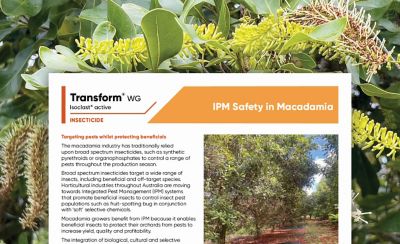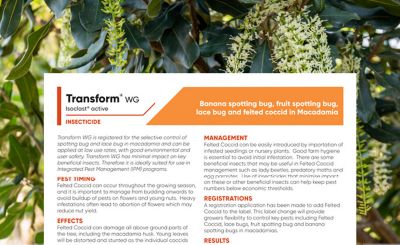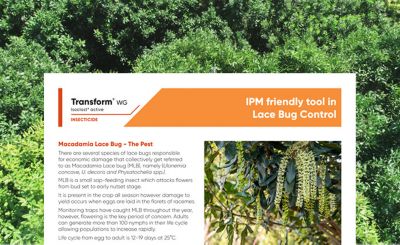He said they looked at softer chemistry, particularly earlier in the season, to keep beneficial insects in the orchards rather than taking them out with broader spectrum products.
“We have seen flare events with spotting bug when we have introduced a more broad-spectrum product. We actually see a rebound in the pest because we’ve controlled spiders and parasitic wasps.”
He said with a softer product they were taking the cap out of the pest population and allowing the beneficials to catch up on that population.
Kate Piper said the scouting involved a cut nut assessment to determine how many have been stung by fruit spotting bug. It also took into account the number of beneficial insects in the orchards.
“Some of the nuts are a result of premature nut drop or poor pollination but you can get a grasp with how many stung nuts you find and what the pressure is like.”
“We can then pull the spray forward or push it back a week depending on the results.”
She said the first spray for fruit spotting bug was Transform® WG Isoclast® active, from Corteva Agriscience.
“Transform WG targets spotting bug and it’s a soft product on beneficials. We do multiple sprays, generally earlier in the season, so we can use our other chemistry at the back end.”
Mr McDonald said they had conducted their own research comparing products and spray systems at their own farm at Alloway, south of Bundaberg.
“We can conduct a lot of that work on farm and showcase new options for growers to improve their productivity.”
“Last year that included further benchmarking with Transform WG and other products considered softer in the program,” he said.
“We found the beneficial ratios were two to three times higher versus using a conventional spray program with broad spectrum chemistry.”
“The softer programs have generally outperformed the broad-spectrum programs each year giving us a better-quality product.”
“If we’re not maximising premium kernel numbers for growers its going straight off their bottom line. It’s something that comes on a piece of paper at the end of the year which makes you fully aware of how important that quality is.”





